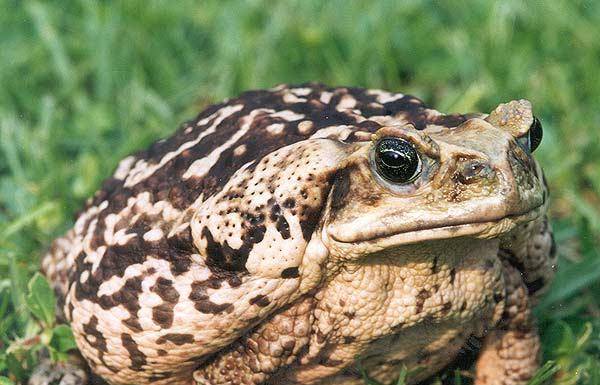The cane toad originally comes from South and Central America. It is now spreading to other countries and often endangers dogs.
What makes the animal so dangerous for dogs?
In the 1930s, Australian farmers imported the animals to fight sugar cane beetles on the plantations. But the animals didn’t eat the beetles at all. Because the insects stayed in the tops of the cane, the toads couldn’t get to them. Instead, the animals ate snakes, birds and rats. The cane toad multiplies incessantly and gradually displaced native animal species. A female toad can lay up to 35,000 eggs. There are now several million toads in Australia alone. In the meantime even crocodiles fall victim to the toad. However, this is due to the extremely toxic secretion that the animals secrete.
Animal venom is a defense mechanism. The cane toad secretes it through its parotid glands when threatened. If dogs or cats mistake the animal for a toy and put it in their mouths or lick it, this can even be fatal. The four-legged friends can die within 15 minutes. Numerous animals have already died from the toad’s poison.
The voracious giant toads feel particularly at home in wet areas. Anyone who lives near streams, ponds or rivers should therefore be careful and prefer to walk the dog on a leash. Care should also be taken in the garden, as many cane toads settle there. It is still questionable how much the toads will spread and how their population can be contained.



